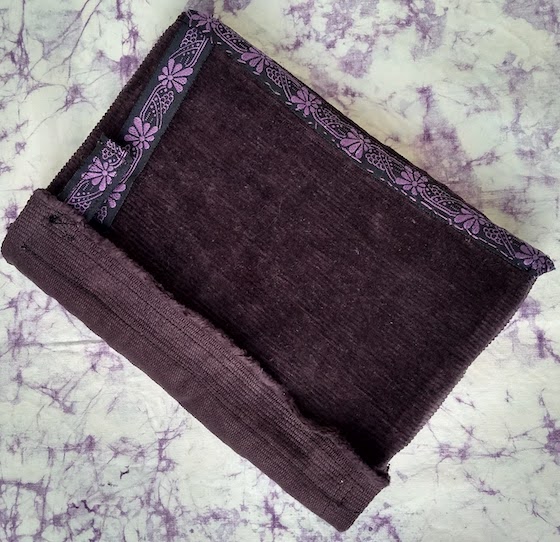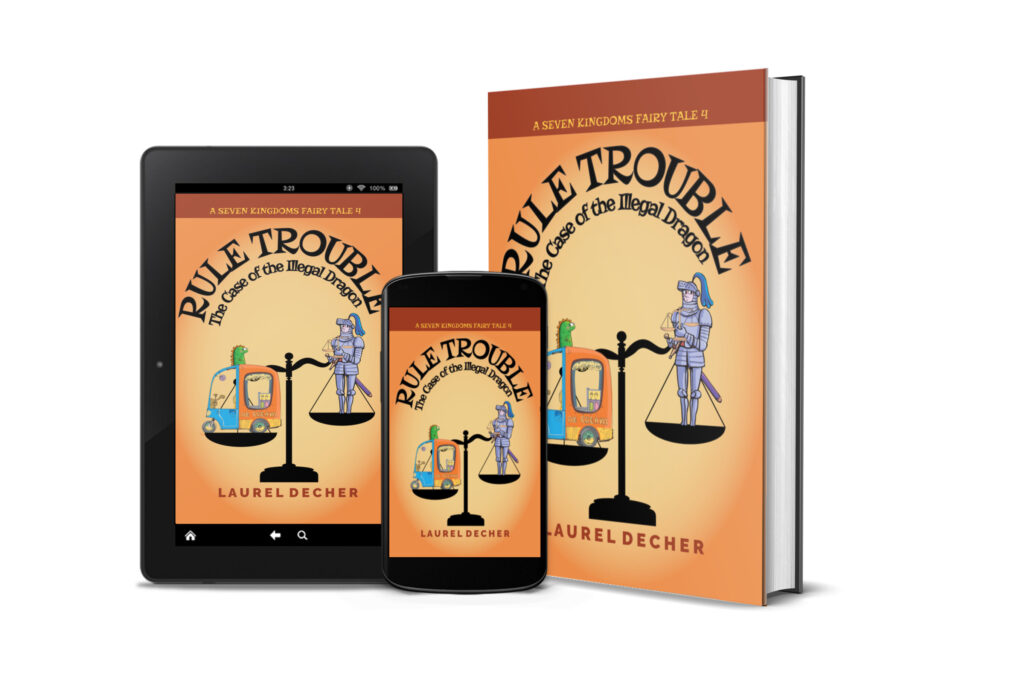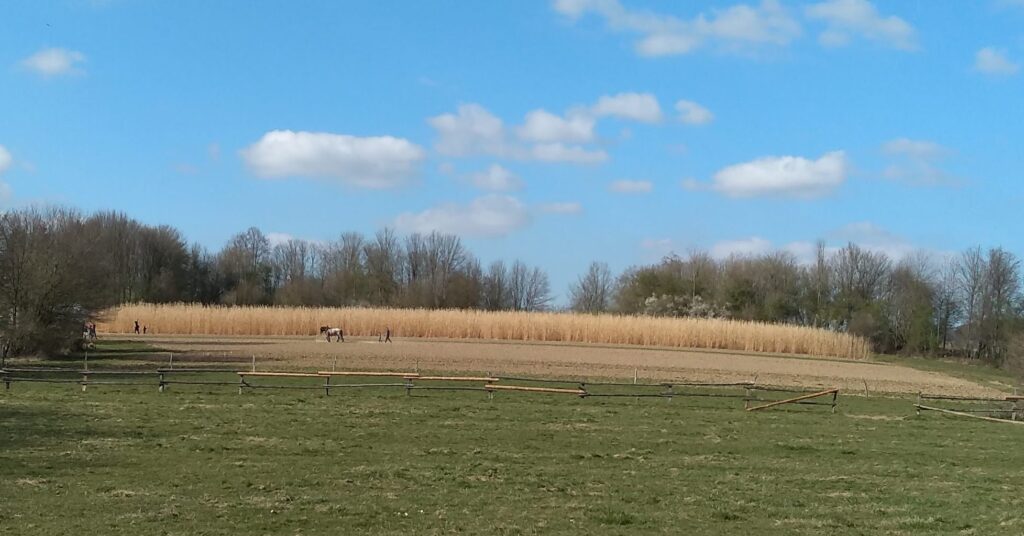
"That's the hardest part of weaving. Getting the edges even."
-Weaver in the Lindlar open-air museum
Recently, I tried a little weaving on a small hand-held loom and couldn’t figure out how to keep the weaving from being too tight–when the weaving pulls together and giving the cloth crooked or waving edges–or too loose, making extra loops on the edges of the weaving.
At the museum, I asked a weaver how she knew when the cross thread was tight enough or loose enough before she pulled the heddle tight against the finished row.
She turned to me with a smile and said, “That’s the hardest part of weaving.”
When I got home, I realized there were a lot of hard parts in the many skills demonstrated at the museum.
I’ve shared the five most interesting examples below.

This museum is a collection of houses, farm buildings, cottage industry, and a narrow gauge mining train, with special exhibits about life in the rural, hilly “Bergisches Land” part of Germany.
The exhibits were a fascinating mix of small cottage industry and farming and mining.
1. What's the hardest part about making ribbon?
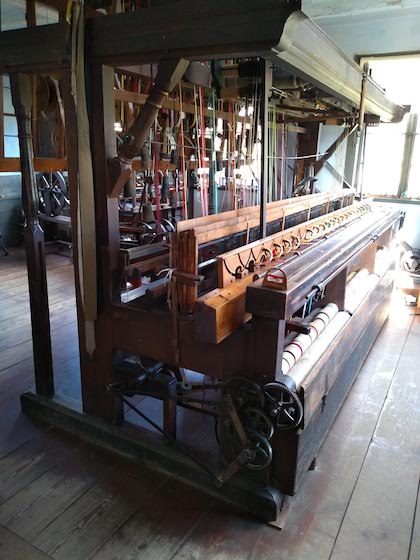

Before this cottage was moved to the open-air museum in Lindlar, Germany, it was the home of a ribbon-maker.
This loom weaves 26 kinds of ribbon at once. The long bar that runs across the front of the loom is the “brake”. It slides right to connect to the transmission that connects to a motor. Sliding left disconnects the power. The shuttles weave back and forth something like 80 times per minute, so when something goes wrong–a thread breaks, something gets tangled–the weaver has to stop the loom ASAP.
The hard part wasn’t getting the spools of silk thread to weave the ribbon. The customers supplied the thread when they placed their order. I would think the hard part was not being able to see what you are doing. Weavers originally hung a kerosene lamp from the short bar hanging down in front. The lamp could be moved along the length of the loom. Later, they had weak electric lights.
Weaving dark ribbon in blues and blacks for men’s hats had to be challenging! The museum guide said that weaving ribbon was profitable enough in that era to earn a good, living wage, but the work hours were long.
Water from a lake powers a waterwheel . . .
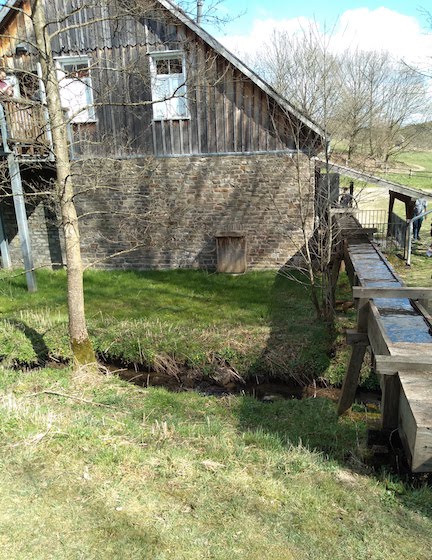
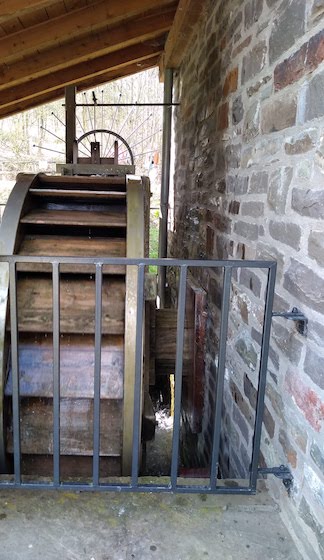
The huge gear powered by the waterwheel powers the belts that drive each of the rag processing machines. This machine has a roller studded with metal teeth that shreds the processed rags.
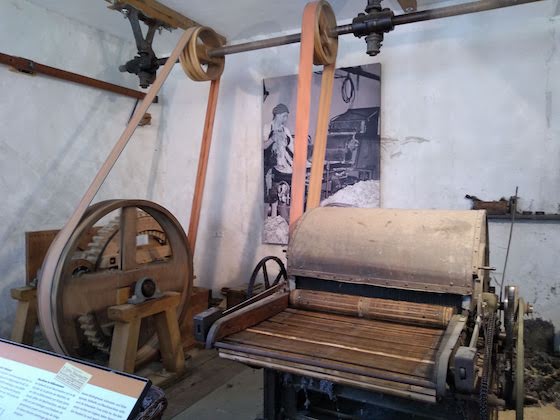
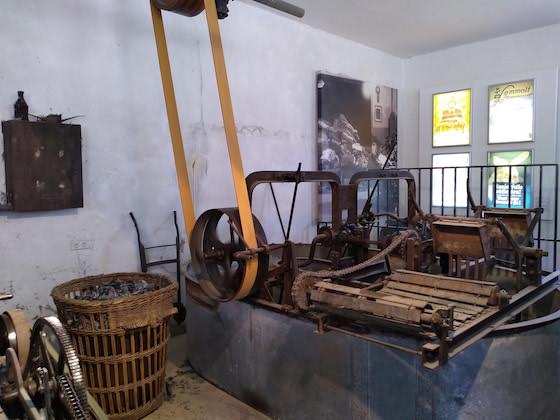
This machine washes the rags with chemicals. Big metal forks scoop up rags from the washing tanks and stir them around.
But before the rags could be shredded or treated, women sorted through the dirty rags and removed every piece of metal–hooks and eyes, snaps, or any other fastener that could cause a spark from the metal machine that could blaze into a fire. The air was full of steam and vapor from the chemicals and the rags were sometimes contaminated, so the workers often got sick.
Recycling wasn’t always the environmental choice. Recycling today does a better job, but all recycling needs more energy and materials to work.
Time to pay more attention to “Reduce and Re-use”?
3. What's the hardest part about house work?
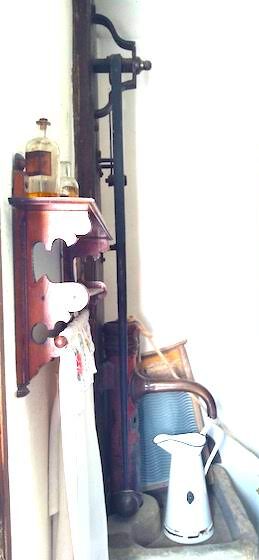
Running water has to be one of the modern wonders of our age. This pump for a small kitchen sink has to be the luxury model. The pump handle is as tall as a person–super, duper leverage!
I’m not sure why the spout is so close to the edge of the stone sink. It seems like the kitchen would get flooded very easily.
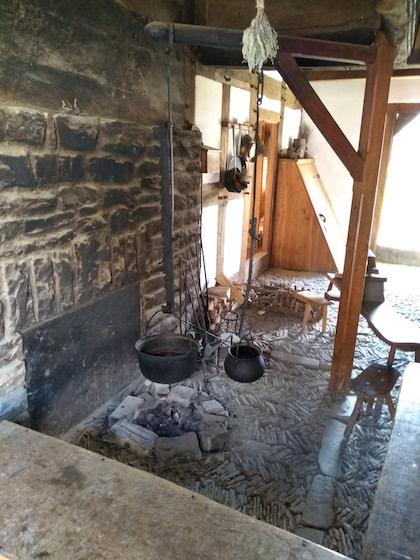
4. What's the hardest part about re-creating a room?
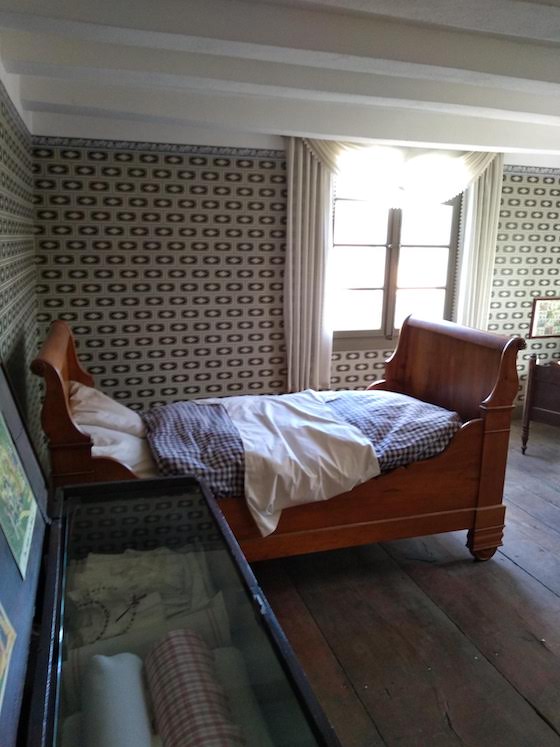
I’m guessing the hardest part about re-building these historic houses is getting the spare parts.
Even the wallpaper is historically accurate!
The Deutsche Tapetenmuseum in Kassel, Germany [German wallpaper museum] matched scraps of wallpaper to the original designs. This wallpaper was printed from 1850 to 1870 with a process called: “Zylinderdruckverfahren”. [I haven’t been to the wallpaper museum yet, so I can only guess what a cylinder print process is.]
This house was moved to the open-air museum after the original family moved away from a rural lifestyle.
In the museum, a series of aerial photographs showed how mining gradually ate away at the farmland over time. To me, it looks like environmental devastation.
What was the hardest part of their story? Did they feel they were “getting ahead” when they moved away? Or was the hard part the loss of a beloved home and way of life?
5. What's the hardest part about relaxing after the work is done?


Sometimes the hardest part about the work is that it just . . . keeps . . . going!
Now that you’ve done all the hard work, it’s time for the traditional “Bergische Tafel”. Think High Tea on steroids and you’ll be close. This is a tiny version. Don’t you love the little red sofa in the beautiful house called “Gut Dahl”?
What about you? What's the hardest part of what you do?
I think the hardest part about writing books is accepting that what I write will always be different than what I imagined before I started. Until I accept that, I get in the book’s way. Just like a visit to a museum, I need to sift through all my impressions to find the story.
What about you? What takes the most effort in the work that matters to you? How did you learn to do it? Are you glad you put in the effort?
The hardest part about being a judge . . .
Rule Trouble: The Case of the Illegal Dragon is about being divided from your friends, because you’re trying to be fair to everyone.
Eleven-year-old Vlad is trying to follow the rules without losing his friends. But he and his friends are on the opposite sides of the judge’s bench.
Everybody gets into the act in this magical tale about justice for all!
The hardest part about being an epidemiologist . . .
I started writing this book during the COVID pandemic, because many friends didn’t always see the “rules” in the same way, and it hurt us all.
My formal training is in epidemiology, and it didn’t include a course on how to talk to your friends. This book was my way to work through a little of my own grief.
There’s no epidemiology or pandemic in this book for ages 9 to 12.
But there is an illegal baby dragon . . .

